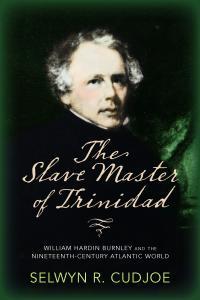What Constitutes an Educated Trini? - Pt 2
By Dr Selwyn R. Cudjoe
February 04, 2019
PART 1 — PART 2
"The school curriculum is not delivering the quality of individual we need to build the nation."
—Paula-Mae Weekes, President of Trinidad and Tobago
Neal Phillip, professor and chairman of Chemistry and Chemical Technology at Bronx Community College, City University of New York (CUNY), wrote the following article, "Preparing Students to enter a 21st Century Workforce," at my instigation. I wanted to follow through on suggestions to improve high school education in Trinidad and Tobago (T&T). I reproduce Professor Phillip's article with a few editorial changes.
"I grew up in Tacarigua and attended Tacarigua A. C. and D'abadie Government schools before I went on to Queen's Royal College (QRC) where I received what can be described as a classical education. Although the Junior Secondary, Senior Secondary and Technical schools moved away from the classical model, I believe T&T schools need to focus more effort on high impact practices, particularly on experiential learning, to better prepare our students to function in an ever-increasing technical world.
"When I examine the requirements for the 21st Century workforce, just earning a Bachelor's, Masters and Ph.D.s degree would be insufficient and, under certain circumstances, could be rendered obsolete. Technical skills, rather than degrees, are becoming paramount. I present some examples of experiential learning models from my experiences in the United States and programs I developed.
"I sit on the Professional Advisory Committee for New York Harbor High School which is dedicated to planting one billion oysters in New York Harbor to improve the water quality. Although the students engage in traditional subjects such as Mathematics, Chemistry, Biology, and English, they also concentrate on the oyster project. Students learn how to build and pilot boats, dive and care for the oyster beds, monitor the water quality and the health of the oysters.
"These students also take classes in Geographic Information System (GIS) and Remote Sensing to use satellites and other spatial tools to better learn about the environment. At the completion of their studies they are prepared to enter a university with sound technical training. This ensures they will enter the workforce eventually with highly sought-after technical skills.
"My work also takes me outside the United States. In Australia I visited elementary schools where a similar experiential learning model is adopted. At Hermit Park State Elementary School in Townsville, Queensland, the focus is on sustainability. Along with studying traditional subjects such as Mathematics, Science, and English, students engage in growing crops, participate in aquaculture, growing chickens, and caring for bees.
"They also sharpen their skills in science and other fields by checking the pH of the water in the fish tank, monitoring the acidity of the soil, and checking on the wind speed that powers the wind-powered ground water pump. Rather than relying on class tests and exams only, the students' performance in these activities is a part of their overall assessment. They learn valuable technical skills "by doing."
"The exchange was reciprocal. Students from Hermit Park trained my students on how to build low cost environmental sensors to measure temperature, relative humidity and carbon dioxide during our visit there in November."
"I have also engaged with IBM through the Smarter Cities program and have become a big fan of their P-Tech schools. P-Tech is a collaboration between IBM, the New York City School system and CUNY that essentially provides high school students with high level technical skills, particularly in coding and artificial intelligence so that they earn both a high school diploma and an Associate's Degree upon graduation. With the skills they have acquired, they are immediately scooped up by IBM into lucrative technical careers at the age of 18 and 19.
"This system is now adopted widely in the United States, Australia, Europe, and South America. It could be a model for T&T where companies can partner with educational institutions to provide a better prepared workforce for a particular sector of the economy.
"I am also a mentor for the CUNY - IBM Watson Case Competition where students work in teams and vie for a $5,000 first place prize to use IBM Watson and blue-mix technologies to improve higher education and NYC government functions. This program has provided the students with skills in AI and cognitive computing that prepares them for the 21st Century workforce. Some of these students have even formed companies with apps and ideas they developed for the program.
"I have also started study-abroad programs in CUNY to increase students' technical skills and their language, cultural and global competencies so they can function at the highest level in the 21st century. Recently, we spent two weeks in Mallorca, Spain and Townsville, Australia respectively installing solar powered wireless weather stations, monitoring weather conditions and pollution, block by block, with our specially constructed back pack weather station. We trained students in those countries about sustainability using collective social learning and thematic communication methods.
"My students also took away life-long technical and other skills from their foreign counterparts that will allow them to be highly competitive in their professional careers.
"T&T need to begin conversations on adopting best educational and high impact practices to better prepare technically-sound students who could be competitive in a 21st Century workforce that is also becoming more global."
Professor Phillip has distinguished himself in experimental methods for teaching of high school students. He has donated a similar weather station to QRC and worked with students and their geography teacher to install it. There is so much our educators can learn from his experience?
Professor Cudjoe's email address is scudjoe@wellesley.edu. He can be reached @ProfessorCudjoe.
Share your views here...

The Slave Master of Trinidad by Dr. Selwyn R. Cudjoe
|

